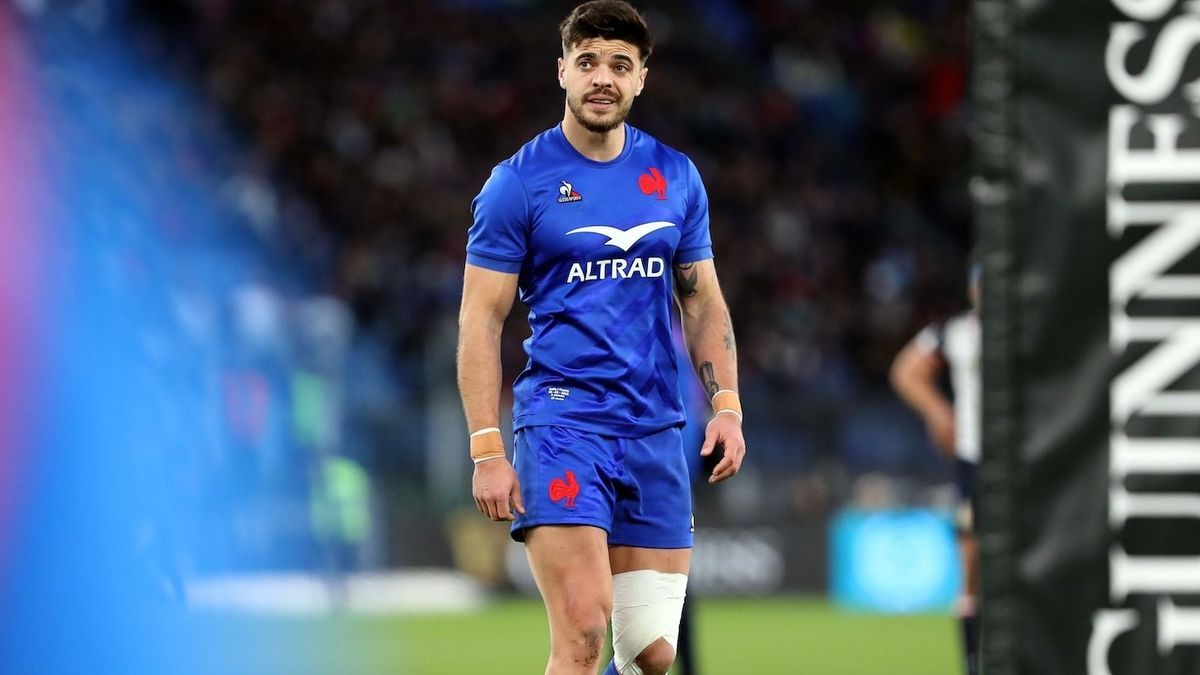
Saturday evening, Romain Ntamack, opener for the French rugby team, went out during the match between Europe and Scotland, visibly suffering from his left knee. This morning, we learn that a rupture of the anterior cruciate ligament of the knee obliges him to forfeit the World Cup which begins in a month.
Romain Ntamack forfeits the Rugby World Cup
Sacred blow for the XV of Europe! Romain Ntamack, opener for the Europe team is out of the next World Cup which starts in less than a month in Europe. While the first feedback from the staff seemed reassuring (we were then talking about a “hyper extension of the knee”), the verdict fell this morning with AFP and then finally confirmed by the player: he is the victim of a rupture of the anterior cruciate ligament of the left knee.
📣 (Information #XVdeFrance) 👇
Romain Ntamack, Cyril Baille, Demba Bamba and Thomas Laclayat.— Europe Rugby (@FranceRugby) August 14, 2023
This misadventure is reminiscent of that of Lucas Hernandez who suffered a similar injury at the start of the last football World Cup. At the time, we interviewed Dr. Roland Krzentowski, a sports doctor. Back to these explanations.
Rupture of the anterior cruciate ligament: what does this injury involve in an athlete?
The rupture of the anterior cruciate ligament is well known to athletes and particularly feared because it leads to a fairly long unavailability. As Dr. Roland Krzentowski, a sports doctor, reminded us, a joint is made up of bones that are attached to each other by strings called ligaments, the stability of this joint is ensured by these ligaments, but also by the muscles. .
“At the knee, the anterior cruciate ligament is the main ligament in the stability of the knee, responsible for stability in rotational movements. When it’s broken, we’re like a chair that only has 4 legs left, we’re unstable” he illustrated.
Consequently, the rupture of the ligament is incompatible with the practice of rugby, a sport at risk of instability, with changes of direction but also a lot of contact.
How is this injury diagnosed?
The diagnosis is usually quick and recognizable: “The perception of a crack, the feeling of instability when bearing down and swelling almost confirm the diagnosis. evoked the doctor. “The examination, an MRI, will demonstrate the laxity, that there is play between the bones”.
What is the planned treatment?
The treatment will depend in particular on the sports practice of the injured person. The specialist explained:In people who never put themselves in a situation of instability, conservative treatment is considered, if the rupture is isolated”. This means that we can let things deflate, return to normal and that rehabilitation can then allow a normal social life, with the practice of sports activities such as cycling.
“In the case of a high-level athlete, surgery is necessary to continue his activity! It consists of redoing a ligament (the broken one cannot be repaired) by grafting in its place what may be around it: tendons, the quadriceps… We redo the ligament to stabilize the knee again”.
Then comes the time of rehabilitation to consolidate the knee, then that of re-athletics, to gradually put the athlete back in situations of play and instability.
I’ll be back pic.twitter.com/HPO9rVpFbC
— Romain Ntamack (@RomainNtamack) August 14, 2023
A long road that Romain Ntamack will have to follow to return to the Top 14 fields, this season, or the next. Athletes affected by a cruciate ligament rupture generally cannot hope to return for a period of 4 to 6 months.
